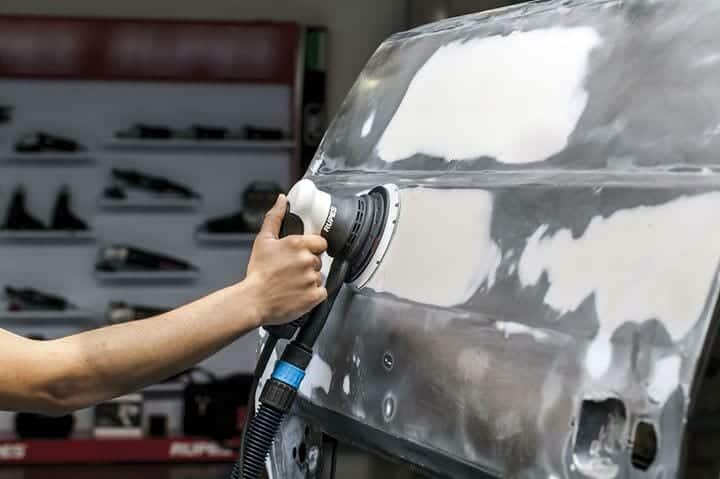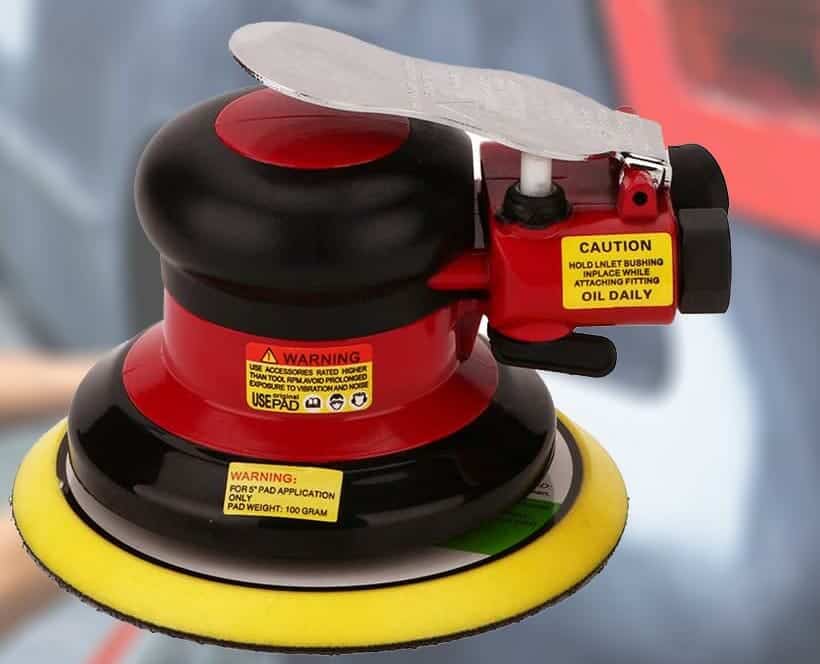Sanding is a way of polishing or smoothing a surface using abrasion via sanding paper. Sanding can be carried out on a manual basis using sandpaper on its own or via a sanding block. It can also be carried out using a machine such as an orbital sander.
As with any DIY project you want to make sure that you have the right tools before starting the job. This means you will get the job done correctly and to a high standard. It also prevents you from running up against problems or getting frustrated when things do not go as planned.
It is the same when undertaking a sanding project and you want to make sure you find and purchase the best orbital sander for the project that you are planning to undertake. This means researching the tools that you might need as well as all of the options that are available concerning those tools.
We have prepared a guide that will take you through the different types of orbital sanders, provide a comparison between wet and dry sanding and ultimately inform you on the important factors to consider when wet sanding with an orbital sander.
Wet sanding VS dry sanding
Dry sanding is the traditional method of sanding and is typically used on wooden surfaces. Dry sanding is less complicated and requires less equipment. There also tends to be less mess when dry sanding and if you have a sander such as the R2601 Ridgid orbital sander (which comes with a dust collection unit) there is very little mess to contain.
Wet sanding, on the other hand, is slightly more complex in nature. With wet sanding, you will of course need water involved. When you add in the water you have some risk implications, especially if you are using an electric sander. With wet sanding you also have more mess to deal with as the dust from the sanding process will mix with the water. In addition, with water comes the potential for rusting or seizing up of moving parts.
There are lots of advantages to using a wet sanding process as well. Wet sanding will provide a much smoother finish. You can get a very flat surface resulting from the wet sanding process and furthermore, you can get a scratch-free finish when sanding metal surfaces.
When is wet sanding preferred?
Quite often dry sanding is more than adequate and is the most sensible option due to the advantages of dry sanding. This is especially true when sanding wood as you can generally get just as smooth a finish with dry sanding, as you can with wet sanding.
However, in some cases, wet sanding is the preferred method. This is particularly true with bodywork sanding. The primary reason for this is due to the smooth scratch-free finish that can be produced with wet sanding vs dry sanding. When using an orbital sander to polish your car, a scratch-free finish is very important, and this is difficult to achieve without adding water to the process.
Best DA sander for bodywork
In addition to wet sanding, a DA sander (Dual action sander) is also preferential. A dual-action sander is different from a normal sander because it can rotate smoothly on one axis (Like a traditional orbit sander) but can also produce a “wobble” effect so that it rotates on two axes. This wobble effect produces a much smoother finish and avoids making edge marks on the surface being sanded.
The best DA sander for bodywork, in our opinion, is the air random orbital palm sander from Gedu. This sander is affordable and compact but also does a fantastic job of producing a smooth finish on bodywork surfaces.
how to wet sand with an electric orbital sander
You can use an electric sander for wet sanding. However, you do need to consider the implications carefully. First, with wet sanding, you are potentially mixing water with electricity, which of course is very dangerous.
This is not necessarily a problem if the water does not come into contact with electricity. Using a double insulated sander such as the BO5041 5-Inch Makita orbital sander will help to ensure this doesn’t happen.
There is also the issue of moving parts sizing up or becoming rusty due to their contact with water. This can happen if water gets into the bearing on the plate of the sander, for example. In this case, you may end up having to replace the platen. However, if you have a sealed bearing this should not happen.
You can reduce the risk of these issues occurring by putting water onto the surface that you are sanding, rather than the orbital sander pad itself. You can also reduce the amount of water that you use in the sanding process – you only need a very small amount of water to make the sanding process effective.
Wet sanding with a pneumatic air sander
Although you can use an electric sander for wet sanding, the truth is that air sanders are built for the job. They work much better when used with water and there are fewer risks or complications involved.
Using a sander such as the FIXKIT 6” random orbital air sander you will get a really smooth finish to your surface and you don’t have to worry about any complications when adding water to the sanding process. If you add in some wet and dry sanding pads with this air sander then you will have the perfect setup.
The other complicating factor with using a pneumatic air sander is that you will of course need an air compressor to make the sander work. If you are looking at an entry-level air compressor to get yourself started with air sanding, the 10020C compressor from California Air Tools is a great place to start. This is affordable but still packs a powerful punch. It is also very quiet thanks to its ultra-quiet design which puts out just 70db of noise.
Completing your sanding project
Hopefully, after reading this article, you have been fully informed on the benefits, and requirements, or wet sanding with an orbital sander. You can now go out and purchase the correct sander, and accessories, to complete your project to the highest standard, using the most efficient tools and methods for your specific use case.



